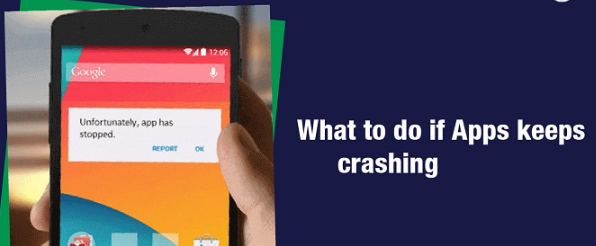It’s incredibly frustrating when your favorite app suddenly crashes, leaving you stranded mid-game or in the middle of an important task. We’ve all been there! This article will help you understand and troubleshoot app crashing problems on your phone. You’ll learn practical steps to diagnose and resolve these issues, saving you time and frustration, and getting you back to enjoying your apps seamlessly. This guide covers various troubleshooting techniques, from simple restarts to more advanced solutions, so you’ll be equipped to handle almost any app crashing scenario.

Identifying the Source of App Crashes
This section focuses on pinpointing the cause of your app crashes. Understanding the root problem is the first step towards finding an effective solution. We’ll explore common culprits and suggest ways to identify which one affects your phone.
Insufficient Memory
When your phone’s RAM (Random Access Memory) is full, apps struggle to function correctly, leading to crashes. This is a common cause.
- Check RAM Usage: Many phones have built-in tools to monitor RAM usage. Look for a “Settings” menu option, often found under “Battery,” “Storage,” or a similar heading. Close any unnecessary background apps to free up memory. This simple action can dramatically improve performance.
- Uninstall Unused Apps: Over time, you might accumulate apps you no longer use. Uninstalling these apps will free up storage space and RAM, reducing the likelihood of crashes.
- Restart Your Phone: A simple restart can often resolve memory-related issues by clearing out temporary files and processes that consume RAM. This is a quick and easy troubleshooting step to try first.
Outdated Apps
Outdated apps may contain bugs that can cause crashes. Keeping your apps updated is crucial for a stable phone experience.
- Check for Updates: Regularly check your app store (Google Play Store or Apple App Store) for updates. Most app stores will notify you automatically, but it’s good practice to manually check occasionally.
- Enable Automatic Updates: Many app stores allow you to enable automatic updates. This ensures that your apps are always running the latest and most stable versions, preventing crashes due to outdated software.
- Update Your Phone’s Operating System: Your phone’s operating system also needs regular updates. These updates often include bug fixes and performance improvements that affect all apps on your device.
Corrupted App Data
Sometimes, an app’s data files can become corrupted. This can lead to unpredictable behavior, including crashes.
- Clear App Cache and Data: In your phone’s settings, you can usually find an option to clear an app’s cache and data. This will remove temporary files and settings, potentially resolving corruption issues. Be aware that this will also delete your app’s settings and progress.
- Reinstall the App: If clearing the cache and data doesn’t work, try reinstalling the app. This will replace the potentially corrupted files with fresh ones.
- Check App Permissions: Ensure the app has the necessary permissions to access the resources it needs. Sometimes, insufficient permissions can lead to unexpected crashes.
Troubleshooting App Crashing Problems
This section dives into practical steps you can take to solve app crashing issues. We’ll cover both simple and more advanced techniques.
Restart Your Device
A simple restart is often the quickest and easiest solution to many software problems, including app crashes. It clears temporary files and processes, refreshing the system.
Check for Software Updates
Outdated operating systems can cause compatibility problems with apps, leading to crashes. Ensure your phone’s software is updated to the latest version.
Force Stop the App
If an app is frozen or unresponsive, force-stopping it can resolve the crash. This is usually done through your phone’s settings or by long-pressing the app icon and selecting “Force Stop.”
Clear App Cache and Data
App data and cache files can become corrupted, causing crashes. Clearing these files can restore normal functionality without losing all your data. This option is generally found in your phone’s app settings.
Reinstall the App
If other methods fail, reinstalling the app from the app store can replace potentially corrupted files.
Advanced Troubleshooting for Persistent App Crashes
If the basic troubleshooting steps don’t resolve the issue, it might be time for more advanced solutions. This section tackles persistent and complex app crashing problems.
Check for Storage Space
Insufficient storage space can impact app performance, leading to crashes. Check your phone’s storage and delete unnecessary files or apps to free up space. Insert a comparison chart here showing available storage vs. app size.
Factory Reset (Last Resort)
A factory reset will erase all data on your phone and restore it to its original state. This is a drastic measure and should only be used as a last resort after trying all other options. Be sure to back up your data before performing a factory reset.
Contact App Developer
If the problem persists despite all troubleshooting efforts, contact the app’s developer. They may have insights into the specific issue or be working on a fix.
Common Myths About App Crashes Debunked
Let’s clear up some misconceptions surrounding app crashes.
Myth 1: All app crashes are due to a faulty phone.
This is false. App crashes are much more frequently due to software issues, bugs in the app itself, lack of sufficient resources (memory, storage), or incompatibility issues. A faulty phone is a less common cause.
Myth 2: A factory reset always solves app crashing problems.
While a factory reset often resolves software-related issues, it’s not a guaranteed solution for all app crashes. Some crashes can be caused by hardware problems or problems with the app’s design that remain even after a reset.
Myth 3: Reinstalling an app always fixes crashes.
Reinstalling an app can often be effective if the app’s data has become corrupted. However, it may not solve crashes related to system conflicts, incompatibility, or problems within the app’s code itself.
FAQ
What should I do if an app crashes repeatedly?
Try the troubleshooting steps outlined above, starting with the simplest ones (restart, check for updates). If the problem persists, consider clearing the app’s cache and data, or reinstalling the app. Contact the app developer for more advanced assistance.
Why does my phone get slow and cause apps to crash?
A slow phone often indicates a lack of available resources, such as RAM or storage space. Close unnecessary background apps, delete unused files, or consider upgrading to a phone with more memory.
Is it safe to clear an app’s cache and data?
It’s generally safe, but be aware that clearing an app’s data will remove your settings and progress within the app. This is a good step if you’re facing app crashes.
Can a virus cause an app to crash?
While less common on modern phones, malicious software could potentially interfere with apps and lead to crashes. Ensure you have a reputable antivirus app installed and keep it updated.
What is the best way to prevent app crashes?
Keep your apps and operating system updated, manage your phone’s storage and RAM, and only download apps from trusted sources. Regularly clearing app caches and data can also help.
Final Thoughts
Dealing with app crashes can be frustrating, but with a systematic approach and the troubleshooting techniques described in this article, you can often resolve these issues efficiently. Remember to start with simple steps, like restarting your phone and clearing an app’s cache, and progressively move to more advanced solutions if necessary. By following these steps, you can regain control of your phone’s performance and enjoy a smoother, crash-free experience with your apps.




Leave a Reply